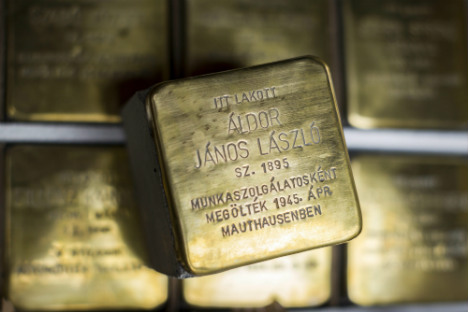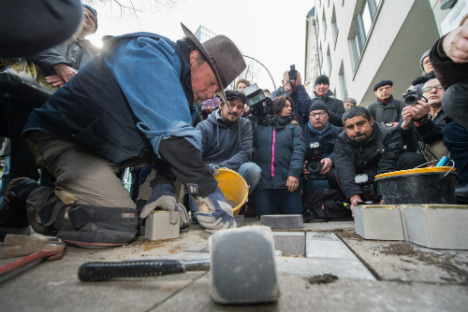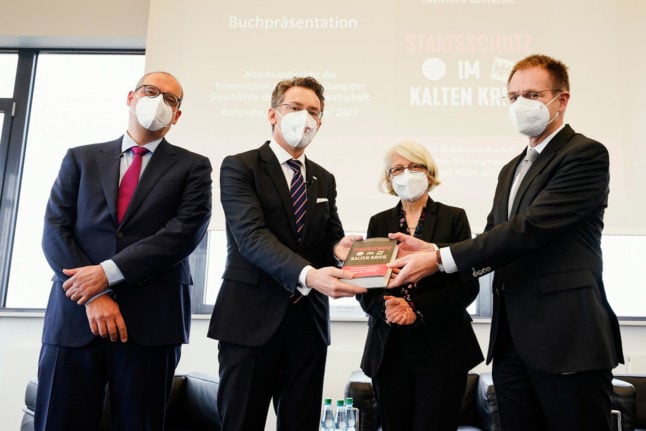Who are they for?
Stolpersteine – literally stumbling blocks – are commonly associated with Jewish victims of the Nazi regime – but they are in fact for all the victims of the Holocaust.
Roma, homosexuals, black people, communists and socialists, and other opponents of the Nazis are commemorated through the small brass plaques.
Why did the project start?
Gunter Demnig, a German artist born two years after the end of the war, came up with the idea for the Stolpersteine. Quoting the Talmud, Demnig says on the official website that “a person is only forgotten when his or her name is forgotten”.
The project is thus an attempt to ensure that the Nazis were unsuccessful in their attempt to eradicate their victims from history.
Demnig officially laid the first stones in the Kreuzberg district of Berlin, although he had already laid some without permission a year earlier in Cologne.
How do they work?
 A Stolperstein from Budapest, Hungary. Photo: DPA
A Stolperstein from Budapest, Hungary. Photo: DPA
Each block is set into the street in front of the last known address of the person before they were killed. It contains the person's name, birth date, death date, and how they died or fled their home, for example being sent to and murdered at Auschwitz.
How big has the project grown?
There are currently Stolpersteine in around 1,000 German municipalities.
But the project has long since spread beyond the borders of the Bundesrepublik. The plaques can now be found in the streets of cities in Austria, Hungary, the Netherlands, Belgium, the Czech Republic, Norway and Ukraine.
There are some 58,500 across Europe – still a tiny fraction of the roughly 6 million victims of the Holocaust.
Why do I never see any in Munich?
Munich remains stubbornly out of step with the rest of Germany on Stolpersteine. Not a single one can be found on the southern city’s streets – despite the fact that at least 4,500 of the city's Jews died in the genocide.
But, it is not because the city’s authorities are embarrassed about discussing their past. The head of the Jewish community in the Bavarian capital has put the brakes on the project.
Charlotte Knobloch, President of the Jewish Community of Munich and Upper Bavaria (IKG), herself a Holocaust survivor, has described Stolpersteine as “dishonorable and impious”.
Her anger stems from the fact that people stand on the plaques. Munich is therefore developing columns as an alternative form of commemoration.
Demnig has personally laid over 55,000
At the end of March, Demnig laid a Stolperstein for Bela Feldheim in Valentinskamp, Hamburg. It was the city's 5,000th.
Feldheim was a baby when she was murdered by the Nazis because of her Jewish heritage.
Demnig, himself, has laid 95-98 percent of all the Stolpersteine in Europe.
 Gunter Demnig lays a Stolperstein for Bela Feldheim in Hamburg. Photo: PBela Feldheim. DPA
Gunter Demnig lays a Stolperstein for Bela Feldheim in Hamburg. Photo: PBela Feldheim. DPA
Correction: This article originally stated that Demnig had laid 5,000 Stolperstein, rather than the over 55,000 he has laid.



 Please whitelist us to continue reading.
Please whitelist us to continue reading.